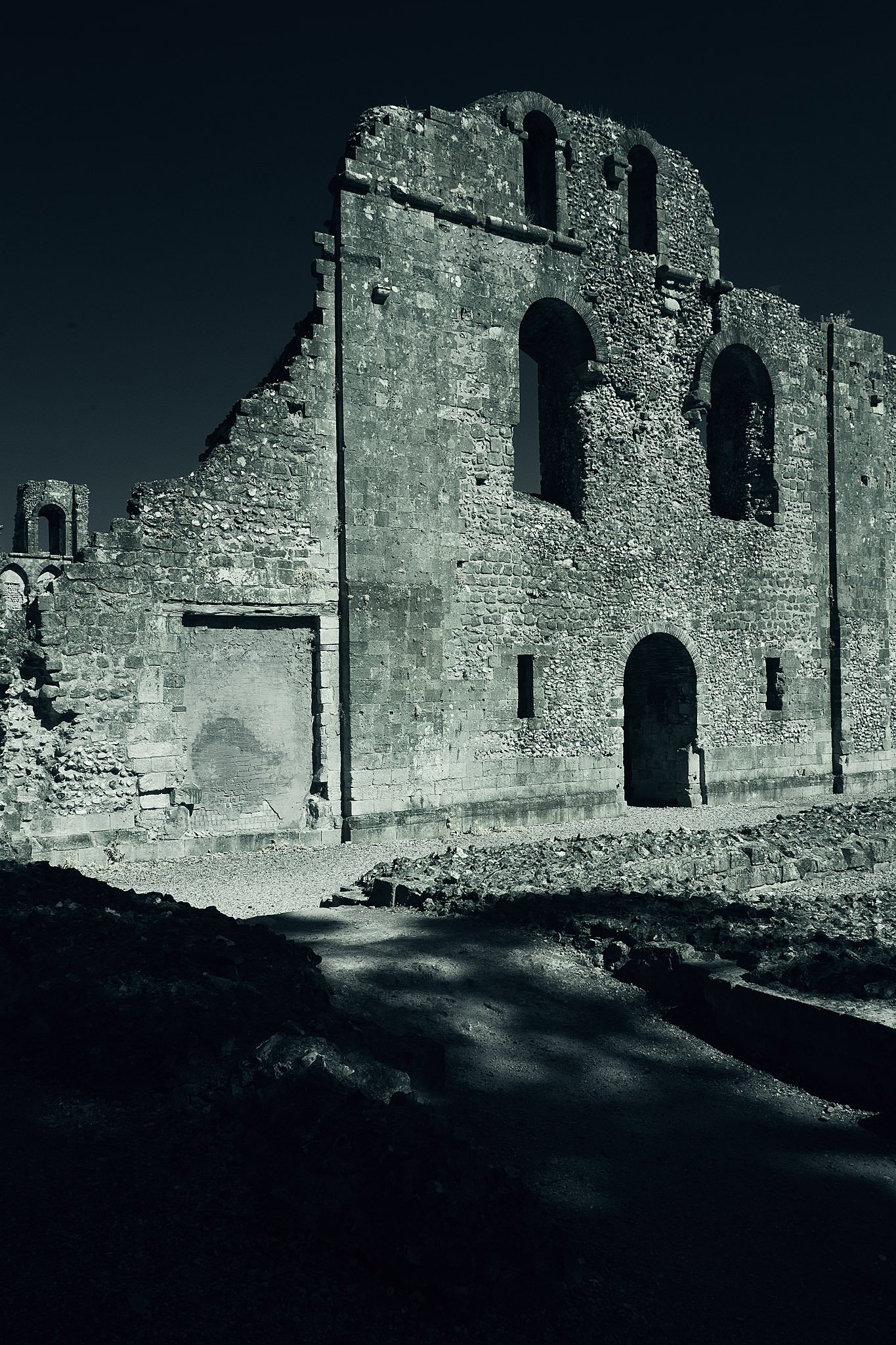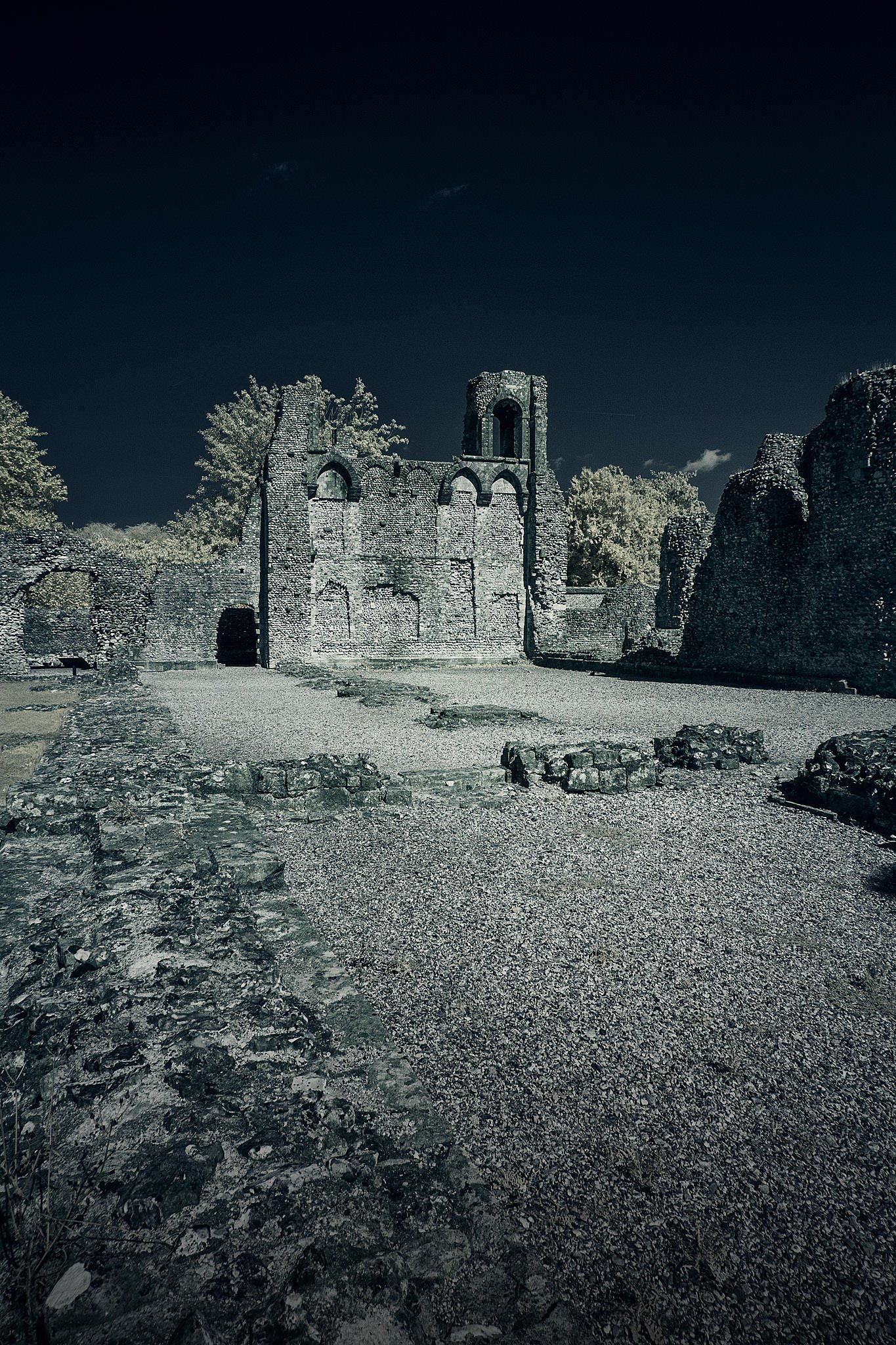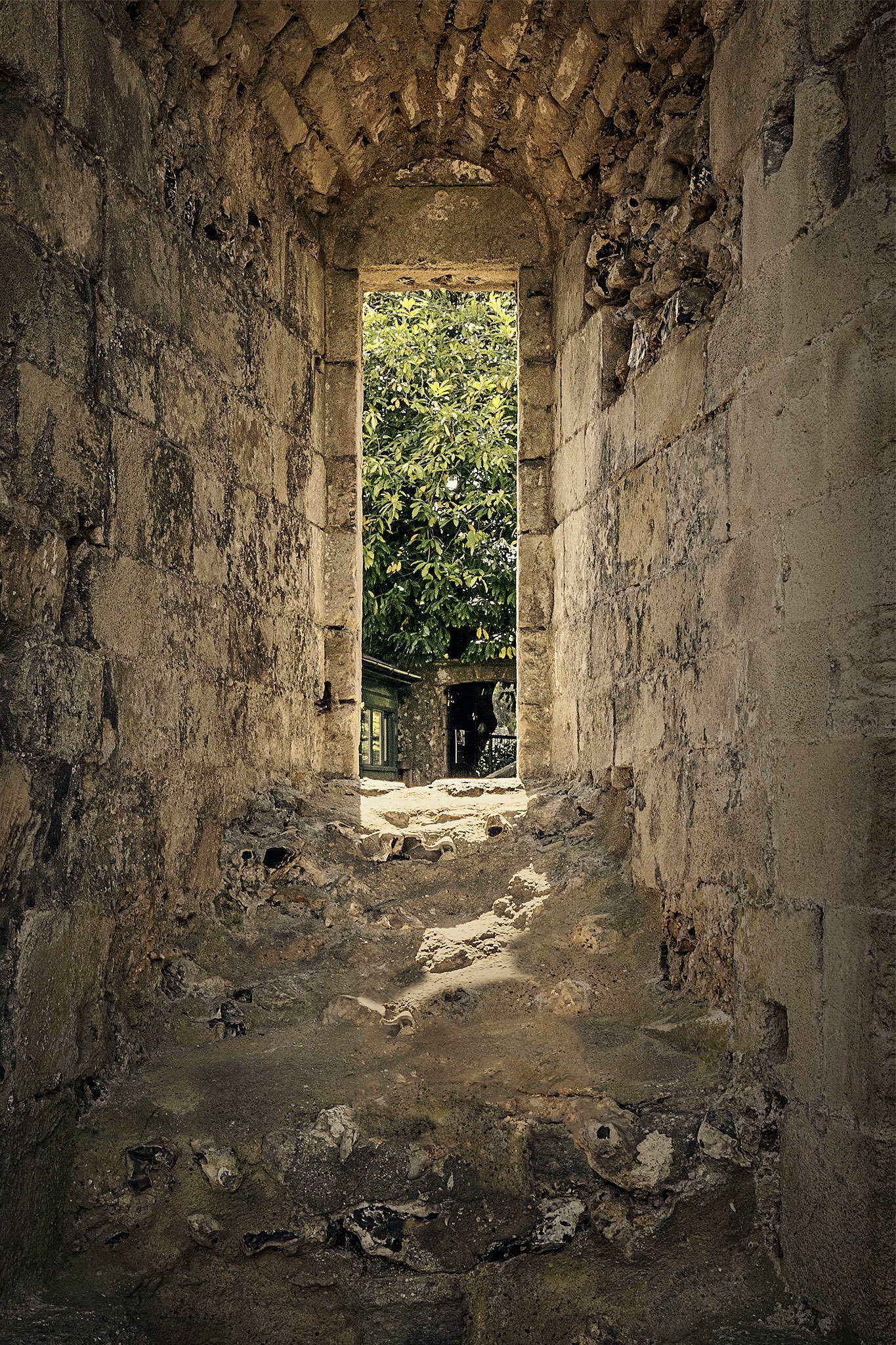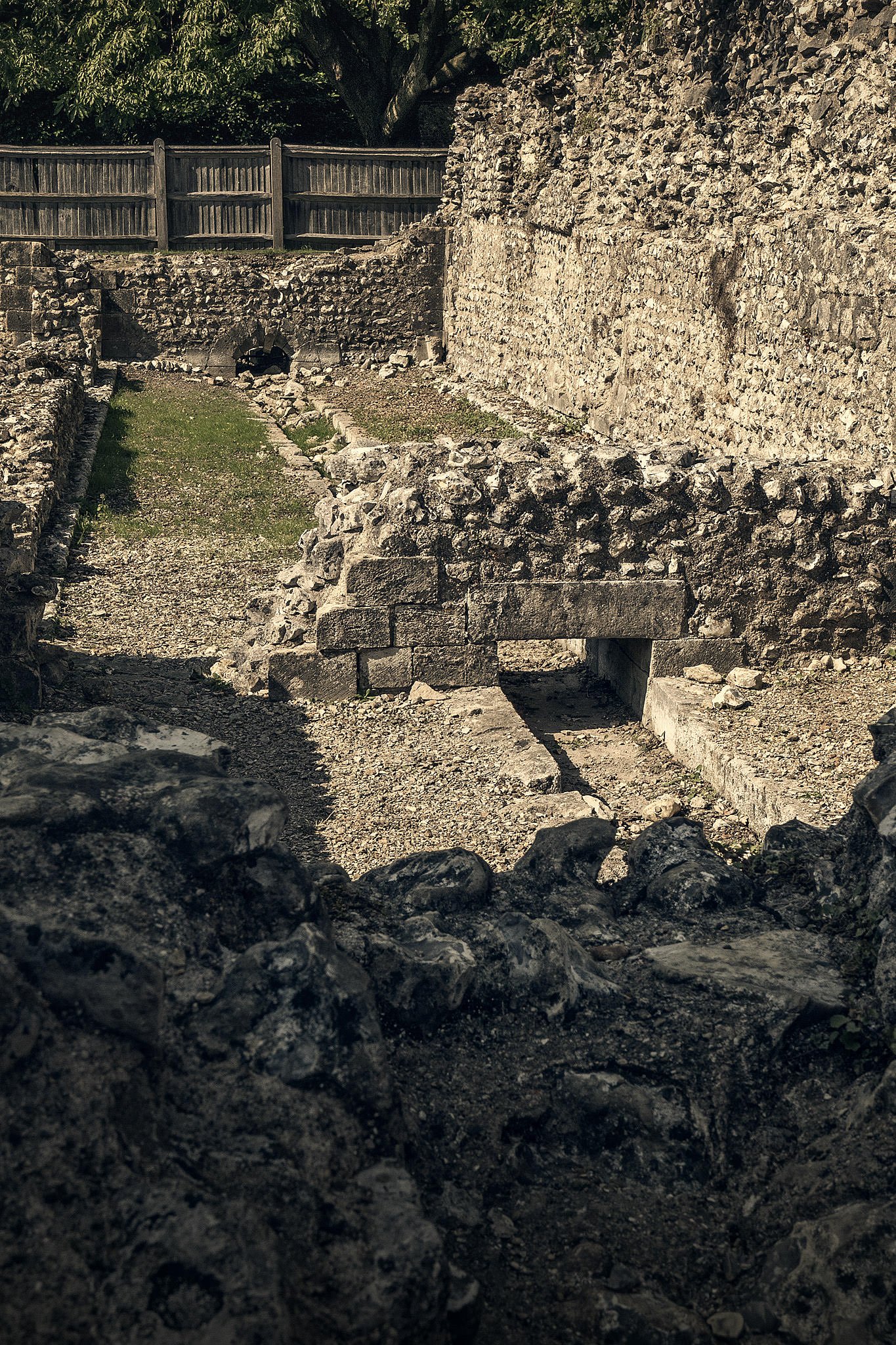Wolvesey Palace Winchester, South East England

In the Middle Ages the diocese of Winchester was the wealthiest in England. In 1927 it was divided into three, but before then it stretched from Surrey to the Isle of Wright. Winchester was the Anglo-Saxon capital of Wessex, and was closely associated with the Anglo-Saxon kings. The early Anglo-Saxon Bishops lived as part of the community of the Cathedral church and did not have separate accommodation, but after the church reform in the 10th Century, the Bishops were given more duties and were required to travel, which made this impractical. The first Bishop of Winchester to live away from the monastery was Aethelwold who, in the late 10th Century, enclosed the area and built on it the first Bishops Palace at Wolvesey.
Each Bishop would have a main church for which he was the head. This was often attached to a Priory, but not always, the church was also often a Cathedral church, but again, not always. Each Bishop would have a main residence though, which was his home near his main seat or Cathedral, and for this Bishops of Winchester, this was Wolvesey palace. In the Middle Ages the word palace was not used for the monarch, it means the home of a Bishop, and usually referred to the home which was closest to his seat or his Cathedral. The Bishop’s palace would be the formal centre of his administration of his diocese, as well as his primary residence.
In the same way that castles had two purposes, both military and domestic, Bishop's palaces also had dual purposes, which were administrative and domestic. Each Bishop ran the equivalent of a fortune 500 company today. Some ran them better than others, but there was always a large number of staff which were required to keep the diocese running smoothly. It may be somewhat confusing to say that the bishop travelled, and while true, he certainly did not travel alone. Each time he travelled, part of his household moved with him, including his furniture. A Bishop travelling would have been accompanied by perhaps 50 to 100 people, which included officials and servants.
The second Norman Bishop of Winchester, was William Giffard. He had previously held the post of Chancellor for William Rufus and Henry I, before being appointed as Bishop of Winchester. He also had the stone built west hall constructed at Wolvesey. It was however, the next Bishop of Winchester who maybe the most famous of them all, Henry of Blois. Henry of Blois was the grandson of William the Conqueror, nephew of Henry I and brother of King Stephen. He played an important role in royal politics, and used his extensive wealth to build a large palace for himself at Wolvesey.
Henry of Blois was promised to the church at a young age. As soon as he was old enough to be educated, he was sent to the Burgundian Abbey of Cluny. His uncle, King Henry I, arranged for him to be appointed as the Abbot of Glastonbury in 1126, and just three years later he was appointed as Bishop of Winchester, but was given permission to also keep his position as Abbot of Glastonbury, which was highly unusual. The 12th Century writer of Gesta Stephani says that Henry of Blois ‘was reckoned to surpass all the great men of England in judgement and wisdom and to be their superior in virtue and wealth.’ It is certainly true that without him Stephen would not have been able to succeed to the throne.
After King Henry I died, Stephen was welcomed into Winchester, where his brother was Bishop. Winchester was also where the royal treasury was kept. Bishop Henry helped Stephen to announce a series of promises, to leading men, which were designed to gain their support for his rule. With Matilda not in England, it was important that they move quickly if Stephen was to be crowned, and yet there was a problem. The Archbishop of Canterbury refused to crown Stephen King while the matter of his oath to Matilda had not been addressed, and so it was put out that the oaths of Stephen and his supporters were obtained under duress, and therefore they could not be held to it. Some of Stephens supporters even put out the notion that King Henry had changed his mind on his deathbed, and freed them all of their oath. This was entirely fabricated, as we know that during King Henry’s dying days he was focused on his desire for his daughter to succeed him. Still, it was enough to change the archbishops mind and Stephen was crowned King of England three weeks after Henry I had died.
As Bishop of Winchester, Henry of Blois was one of the peers of the realm and was the chief advisor to his brother, King Stephen, after his coronation in 1135. The positions Henry held provided a vast income, which he used to greatly extend the palace at Wolvesey. He also built castles and fortified houses at several of his other estates during the civil war of King Stephens reign. The Winchester Annals from 1138, state that Bishop Henry had built ‘a house like a palace in Winchester’.
Henry of Blois was heavily involved in politics, and in the Civil Wars of his brother Stephen and his cousin Matilda. Henry always put his own outcomes before any loyalty, and ensured he would be on the winning side whenever possible. He deserted his brother in 1141 after he was captured by the other side, and welcomed the Empress Matilda into Winchester and prepared to have her crowned, however, when the odds changed from her favour he returned to his brother’s side. After Henry II came to the throne, Bishop Henry took his treasury, and himself, off to Cluny Abbey in Burgundy for three years but eventually returned to his seat at Winchester.
What survives at Wolvesey today is largely the building work of Bishop Henry of Blois. He was Bishop of Winchester for 42 years, during which time he continually added new buildings at Wolvesey. We know that he added a new hall block, a keep, defensive tower, and two gatehouses. He also added the latest in indoor plumbing, with one of the earliest known examples of a piped water supply. Although later Bishops carried out various repair works and alterations to the buildings, Henry’s palace remained virtually intact for the next 500 years. The distinctive red tile inserts may appear to be quite confusing; they are mainly located over the arches of windows and doorways of the palace. They are the result of early conservation work undertaken in the 1920’s.








